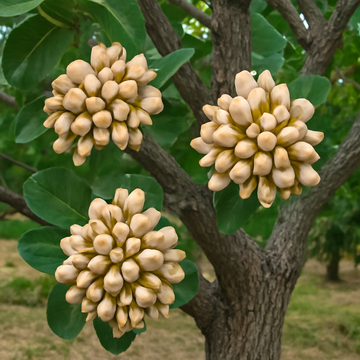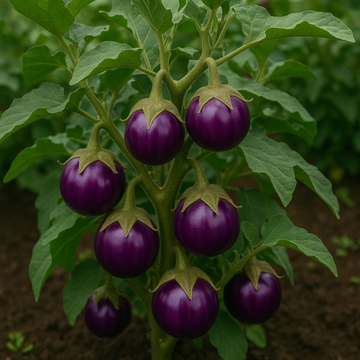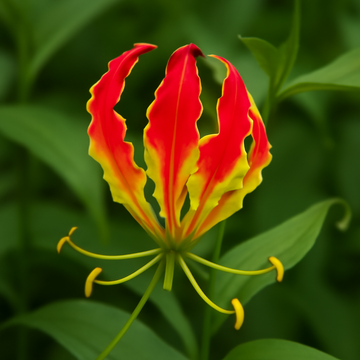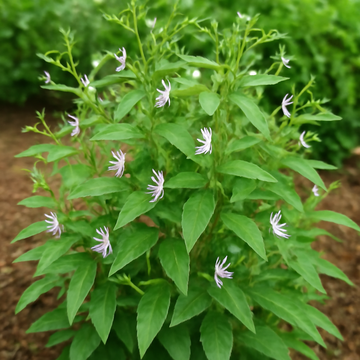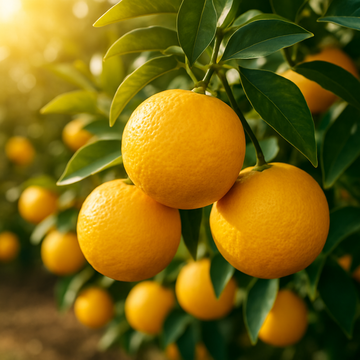
About Galgal Citrus Fruit
Galgal is a small, round citrus fruit, similar in appearance to a lemon, but with a more rugged, wrinkled skin. The fruit is often yellow to orange in color, and its taste is a combination of lemon and orange, with a slightly bitter undertone. Galgal is widely used in Indian cuisine for its unique flavor, particularly in making pickles, juices, and as a garnish. The fruit is also known for its medicinal properties, being rich in vitamin C, antioxidants, and essential oils that contribute to digestive health and immune boosting. Discover Galgal citrus seeds and other gardening essentials at Avniseeds.com

Why Grow Galgal Citrus Fruit?
Growing Galgal citrus fruit in your garden offers a variety of benefits:
- Rich Nutritional Content: Galgal is packed with vitamin C, fiber, and antioxidants, all of which help in boosting the immune system, improving digestion, and promoting healthy skin.
- Versatile Use in Recipes: Its distinctive flavor makes it an excellent addition to Indian pickles, juices, salads, and even as a flavoring for savory dishes.
- Low Maintenance: Galgal trees are relatively easy to grow and require minimal care, making them perfect for home gardeners.
- Sustainable Growth: Growing your own Galgal citrus ensures you have a fresh, home-grown source of fruit that contributes to a sustainable lifestyle.
When to Plant Galgal Citrus Fruit
The best time to plant Galgal citrus fruit is during spring or early summer when temperatures are consistently warm. Galgal trees require a temperature range between 68°F to 85°F (20°C to 29°C) to thrive. These trees are sensitive to cold and frost, so make sure to plant them after the last frost has passed.
Key planting tips:
- Spring to early summer is the ideal planting season.
- Plant when temperatures are between 68°F to 85°F (20°C to 29°C).
- Protect young trees from frost during early growth stages.
Where to Grow Galgal Citrus Fruit
Galgal citrus trees prefer sunny locations with well-drained soil. They thrive in a place that receives at least 6 hours of direct sunlight per day. The soil should be slightly acidic (pH 5.5 to 6.5) and should be well-drained to avoid waterlogging, which can harm the tree's roots.
Growing conditions:
- Full sunlight for at least 6 hours a day.
- Well-drained, slightly acidic soil (pH 5.5 to 6.5).
- Space for the tree to grow (Galgal trees can grow up to 10 feet tall).
How to Grow Galgal Citrus Fruit

- Prepare the Soil: Ensure the soil is fertile and well-drained. Add organic compost or manure to improve soil quality and provide necessary nutrients.
- Planting: Dig a hole that’s 2-3 times larger than the root ball of your tree. Place the tree in the hole and backfill with soil, ensuring that the root ball is level with the ground.
- Watering: Water your Galgal tree thoroughly after planting. Regularly water the tree, but avoid over-watering as this can lead to root rot.
- Fertilizing: Use a citrus-specific fertilizer rich in nitrogen, phosphorus, and potassium to ensure healthy growth. Apply fertilizer in early spring and again in late summer.
How to Care for Galgal Citrus Fruit
Proper care is essential to growing a healthy and fruitful Galgal citrus tree. Here are some key care tips:
- Watering: Water deeply but infrequently. Ensure the soil is moist, not soggy.
- Pruning: Trim dead or damaged branches to encourage healthy growth. This also improves airflow and sunlight penetration.
- Pest Control: Keep an eye out for pests like aphids and citrus mealybugs. Use organic remedies like neem oil to control pests.
- Mulching: Apply a layer of mulch around the base of the tree to retain moisture and protect roots.
Companion Plants for Galgal Citrus Fruit
Galgal citrus trees benefit from being planted alongside certain companion plants, which can help with pest control and soil fertility. Good companions include:
- Basil: Helps repel pests like whiteflies and aphids, which are common in citrus trees.
- Chives: Planting chives near citrus can help improve the growth of the trees while also deterring pests.
- Marigolds: Known for their natural pest-repelling properties, marigolds can help keep unwanted insects away from your Galgal citrus trees.
Avoid planting Galgal citrus near grapevines or vegetables that may compete for nutrients in the soil.
Harvesting Galgal Citrus Fruit
Galgal citrus can typically be harvested in the winter to early spring, depending on your climate. The fruit should be fully ripe when it is bright yellow or orange and feels firm to the touch. You can gently twist the fruit off the tree or cut it from the stem with a pair of pruning shears.

Harvesting tips:
- Harvest when the fruit is bright yellow or orange.
- Fruit should feel firm, but not too hard.
- Store fruit in a cool, dry place after harvesting.
Final Thoughts on Growing Galgal Citrus Fruit
Galgal citrus is a wonderful fruit to grow, offering not only culinary benefits but also medicinal properties. Whether you are interested in using Galgal citrus in recipes, making pickles, or simply enjoying its unique flavor, growing your own tree is a great way to enjoy this sustainable and nutritious fruit. With the right care and attention, your Galgal citrus tree will thrive and provide you with a bountiful harvest. For more gardening tips and to buy Galgal citrus seeds, visit us at Avniseeds.com

